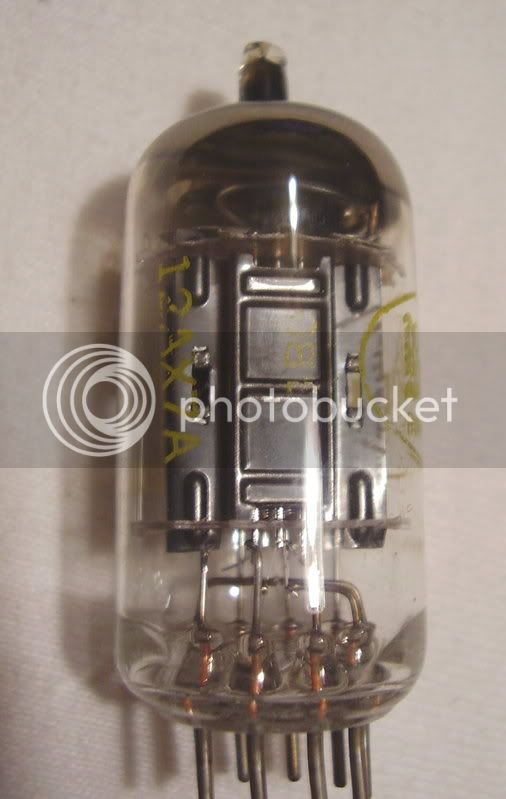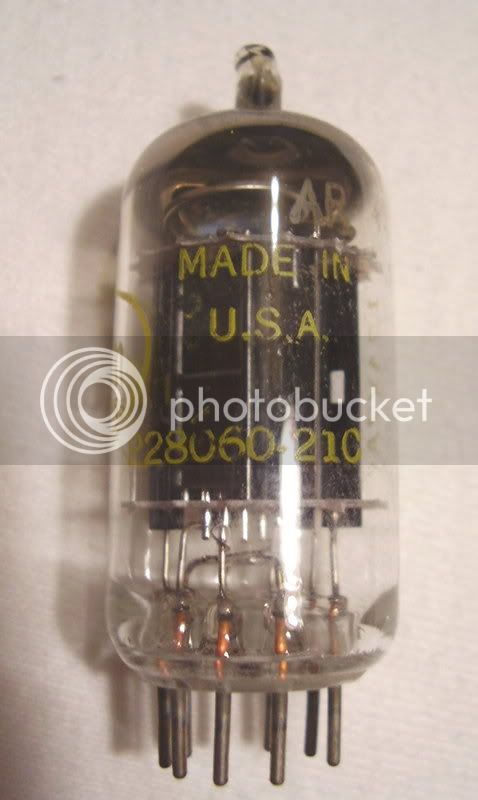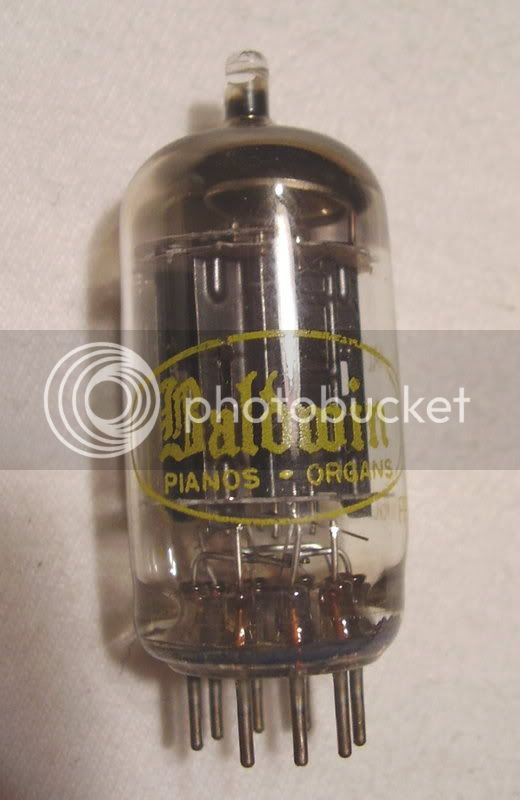Hello 123 the First, and Meursault,
For 123: I am of very limited means, but I shop carefully on ebay, and nearly all the 12__7 type tubes I get there are less cost to me before shipping than what I call "par" price, the price for a new production tube in a guitar store, that arbitrary par price is 20 bucks plus tax and the cost of driving my car to and from the store. My secret? knowing the shape and color of plates, the way that the mica spacers are cut, the getter style and how that getter is attached, the production codes silkscreened or acid etched on the bottle, bottle shape, so I know a chinese tube when I see one, an RFT in an amperex labeled bottle, an Amperex or Philips labeled 12ax7 that was made in the Mullard Blackburn factory, and stuff like that. It is not necessary to do business with specialty tube dealers to get great bargains, and FWIW not all of my transactions on ebay have been wonderful. I pays my money and rolls de dice. Nine times out of ten I win.
I learned the 12ax7 basics from an article in a Vacuum Tube Valley magazine that sixveesix shared with me a few years ago, as well as my purchases on eBay. Think the article was called 12ax7 shootout. Pics and tone comparisons of most NOS 12ax7's there as well as some early new production types. That is the most serious tubeweenie magazine I have ever read, the magazine copies are spendy, and I think that they can still be obtained at Antique Electronic Supply (www.tubesandmore.com)
For Meursault: Regarding balanced phase inverter tube in balanced circuit driving balanced power tubes for more sustain in clean tone, I am priveleged to own an amp designed and built by Chris Siegmund. Got it on eBay for a rather amazing price because his stuff was not well known when I got it. I learned from Chris in many emails and also from operating the amp itself. (www.siegmundguitars.com)
My Siegmund amp is a Midnight Blues Breaker Head. It is a limited production design based on the earliest Marshall JTM 45 with better parts and a few new features to help the user to carefully craft old school Marshall or personal signature tones. It is an amazing stage and recording amp when using appropriate speakers. Chris is one of those special standalone builders who leaves nothing to chance, and every single part he puts in every amp he solely produces is carefully inspected and when called for, tested for meeting specs.
The phase splitter tube and circuit take the preamp signal and split it into two separate signals and sends the signal sides to the paired power tubes in what is called a push pull power section, if the resistors and wiring in each side of that circuit are of different values/measurements then the circuit is not balanced, resistors need to be tested before installation to make sure they are of equal values in that part of the amp. 12__7 type tubes are known as twin triodes. If the phase splitter tube is not of relatively equal output for each triode, the signal is not balanced. If the circuit and phase splitter tube are well balanced within tight tolerances, then the relatively equal signal sides go to the power tubes.
I know that my Mullard 12at7 military PI tube is fairly well balanced and when I sent in my secondhand purchased amp to Chris for the free circuit upgrade he offers to his amp owners of earlier production Midnight Blues amps after gladly purchasing my secondhand owner's warranty,

(let's see Mesa do THAT!) :wink: he carefully balanced the phase inverter circuit at that time.
In that amp, I manually set the bias and bias balance between the power tubes using a multimeter and probes into special jacks in the back of the chassis. While playing the amp, I set the bias first, then balance, then repeat each, when I get the power tubes within about 1 milliamp of each other for current draw, I noticed longer sustain for a given note near the limit of clean headroom for the preamp gain and master volume knob settings...
Ed Smith from Toad Suck Tones amps, another world class relatively unknown amp builder confirmed my observations in his emails too. I have one of his one of a kind customs from another lucky eBay purchase. It's an 18 watt marshall type killer, (no trem channel, though,) uses a pair of Bendix Red Bank output tubes that are sort of like an el84 on growth hormone and steriods originally designed to be used in a nuclear ICBM from the cold war. Talk about turning swords into plowshares...(www.toadsucktones.com) It has both bias and bias balance adjustments too. He builds amazing amps too.
Hope this helps each of you, and others as well. Peace.








